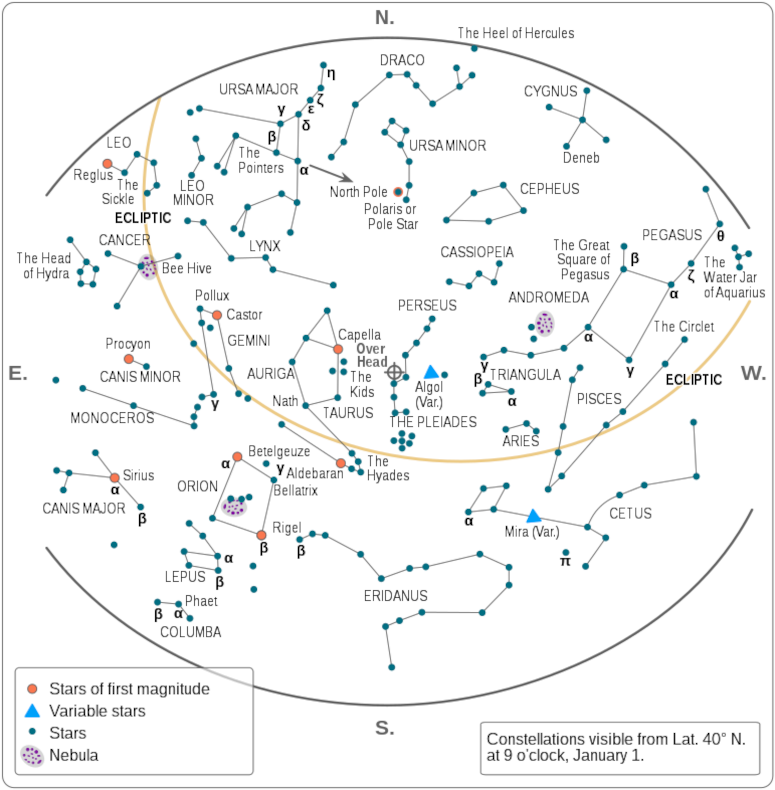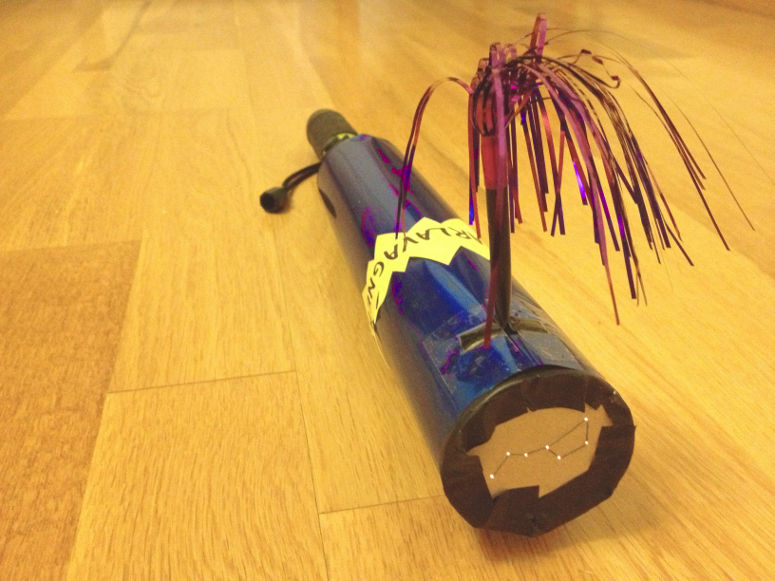Fun and easy science experiments for kids and adults.
Astronomy
Build a telescope for cloudy nights using a paper towel roll. This is an experiment about the constellations.
| Gilla: | Dela: | |
Materials
- 1 empty paper towel roll
- 1 piece of cardboard (or opaque paper)
- 1 pair of scissors
- 1 needle
- Electrical tape (or other opaque tape)
- 1 pen
- Decoration material (optional)
Step 1


Step 2


Step 3


Step 4


Step 5


Step 6


Explanation
The stars we see in the night sky are some of the hundreds of billions of stars that make up our galaxy, the Milky Way. Since ancient times, humans have created images of the patterns that stars form when viewed from Earth. These constellations are good to know in order to navigate the night sky. For example, you might hear about an upcoming meteor shower that can be seen in the constellation of Pisces, or that Saturn now is easy to spot in the middle of Auriga. The image shows the constellations visible in the northern hemisphere during winter.
Image by William Tyler Olcott
Experiment
You can turn this model and demonstration into an experiment. This will make it a better science project. To do that, try answering one of the following questions. The answer to the question will be your hypothesis. Then test the hypothesis by doing the experiment.- What percentage of people can recognise the Big Dipper?
- What percentage of people can recognise Cassiopeia?
- How much would a constellation have to change in order to make it unrecognizable to people previously familiar with it (you can change a constellation by making stars shine brighter, move stars or make stars go out)?
Variations


If you have a flashlight that is too large to fit in the paper roll, you can build a larger stargazer from, for example, a Pringles tube. If you do, you can also create exchangeable constellations, by cutting out round pieces of cardboard that fit inside the lid.
You can also make up your own constellations and name them.
| Gilla: | Dela: | |
Similar
Latest
Content of website
© The Experiment Archive. Fun and easy science experiments for kids and adults. In biology, chemistry, physics, earth science, astronomy, technology, fire, air and water. To do in preschool, school, after school and at home. Also science fair projects and a teacher's guide.
To the top
© The Experiment Archive. Fun and easy science experiments for kids and adults. In biology, chemistry, physics, earth science, astronomy, technology, fire, air and water. To do in preschool, school, after school and at home. Also science fair projects and a teacher's guide.
To the top

































































































































